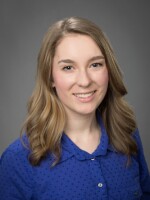Last week, José Piceno started his fifth year as a math teacher at Sparks High School in Washoe County.
High schools in the county are operating with a hybrid model this fall, meaning some coursework is in-person and some is online.
Our reporter Natalie Van Hoozer talked to Piceno about his experience returning to the classroom.
Natalie Van Hoozer: José, what were the first few days of in-person instruction like?
José Piceno: Our first day was just so different this time. I had to go over regulations and help students understand how school is going to change. The first day, to me, is really creating those relationships, really connecting with them because that's really what I like to do. But I thought it was very difficult for me to build that relationship from the beginning. I couldn't even see their faces, so I don't know if they're laughing, I don't know if they're smiling, if they're happy or mad. They were quiet too. It was just different.
Van Hoozer: In my previous reporting on distance learning, I’ve heard from other teachers that math is a particularly challenging topic to teach remotely. What are some strategies you are planning to use for teaching math in this hybrid model?
Piceno: I had to completely change how I teach, which I think is something cool because I'm learning a lot of new skills, but it's so different from how we used to [teach]. We've been given some training, and that's where I got the idea of the hybrid model I'm currently using. You basically have to create everything from scratch, but you're recording your lessons. If [the students] master the material, they're able to move on. I still haven't been able to try it, but I think as a math teacher, that whole strategy is going to allow me to really get to the students who are struggling with the material and give them one-on-one instruction while others are getting the material faster.
Van Hoozer: What are your concerns about education gaps related to math? If students fall behind, how hard will it be for them to catch up later?
Piceno: As a teacher, we know those gaps are going to happen. I'm definitely concerned. We are talking about those things, in terms of the gap. Realistically, unless [the school district] completely changes the whole standards and pacing, there is no way that we, in a future year, can fix those gaps.
Van Hoozer: What types of cleaning supplies are you using in the classroom to protect against COVID-19? What types of procedures are you following?
Piceno: In terms of the cleaning supplies, the ones provided by the [Washoe County School] District were really not that great, so we had to buy our own. I have Clorox wipes. I bought my own supplies to disinfect the computers that the kids are using.
We're not supposed to be sharing really anything with students. [Not even] something as simple as a pencil. Or [in terms of] passing out papers, I'm completely digital just because I don't want to be touching papers, giving them to [the students] or collecting papers. The whole school calculated the number of tables that could fit with six feet of distance. For my classroom, I could fit 16 [desks] but they told me to just fit 14 kids.
Van Hoozer: You're a young teacher, but are you concerned about your own health teaching in this hybrid model? What about your fellow teachers, what are you hearing from them as far as questions or concerns?
Piceno: Personally, I only live with my wife, but I am afraid to bring [COVID-19] home or to get sick myself. Especially [thinking about] me taking it to my parents, and them getting sick is just concerning. I can only imagine, with my other coworkers who are older than me, they might not be at high risk, but they live with someone that is at high risk.
At least, for my department, for my coworkers, the biggest concern is: What if one of us gets sick and then we all get sick? We can only imagine a whole math department going out sick, what do we do? That's a lot of teachers to cover. Who's going to want to cover a classroom where there is a possible case? Those are questions that we're asking ourselves - what do we do?
Van Hoozer: Is there anything you’d like the community to understand what it’s like to be a teacher right now, during the pandemic?
Piceno: We want to go back to work, but we want to be safe, not just for us, but for our kids. We value the safety of our students, and we know that for a lot of our students, school is a safe zone. School is the one place they get fed. We want to be there for our students. We want the state and the people to know there are a lot of safety concerns that we need to be able to solve, but overall, there's no budget for it, there's no funding for it. Right now, we're just getting more cuts and [the situation] is becoming more difficult.
This week the Washoe County School District confirmed positive COVID-19 cases at multiple schools, including Diedrichsen Elementary School, Vaughn Middle School, Lemelson STEM Academy, and McQueen High School.
In a press conference on Wednesday, August 26, Washoe County District Health Officer Kevin Dick restated his recommendation that schools should be closed until there is a decrease in local disease transmission of COVID-19.
This interview was produced in partnership with Noticiero Móvil.







